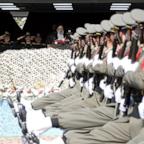Country Profile: Philippines
— -- The sprawling 7,000 islands of the Philippines run the geographic, social and religious gamut.
Mother Nature dishes out typhoons, floods and erupting volcanoes on an almost annual basis.
In June 1991, Mount Pinatubo, on one of the most populated islands, Luzon, erupted after three decades of dormancy, killing hundreds and leaving nearly a half-million temporarily homeless.
But its troubles don't end there. The additional complications are man-made.
People Power, People Troubles
The Philippines is well-known for its political instability: from the people power revolution that toppled the authoritarian Marcos regime in 1986 to the "State of Rebellion" that followed current President Gloria Macapagal Arroyo's ousting of President Joseph Estrada amid corruption charges this year.
In addition, the islands' rebel groups have developed a reputation for kidnapping the wealthy, particularly tourists, and holding them for ransom.
The most well-known of these groups is the Abu Sayyaf, Muslim separatists who operate out the country's south. The Abu Sayyaf have killed their hostages when their demands were not met — in 2001, they claim to have beheaded an American tourist.
The group has had close ties with Libyan leader Moammar Gadhafi.
Aligned With America
The Philippines has had a close relationship with the United States, ever since Spain ceded the islands to the United States in 1898, following the Spanish-American War.
The islands were occupied by Japan during World War II, but gained their independence in 1946, to become a developing democratic republic.
Still, the U.S. military maintained bases on the islands until 1992.
The basic language is Tagalog, but many Filipinos also speak English. More than 80 percent of the population is Roman Catholic.
Today, the country's main industries are lumber, textiles and electronic and electrical products. Its major trading partners are the United States, Japan, Taiwan.




